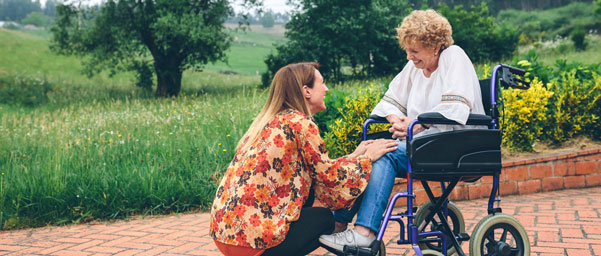Studies have found that gardening and garden environments can offer a host of physical and mental health benefits. Hannah Stephenson finds out more.

Getting outside among plants and nature can work wonders for the body and soul – and garden designer Michelle Brandon is a firm believer in the benefits of a good gardening fix.
Brandon has helped people affected by stroke, ADHD and mental illness, having worked with organisations including the national horticultural therapy charity, Thrive (thrive.org.uk).
She’s preparing a show garden – The Forest Will See You Now – for the RHS Hampton Court Palace Flower Festival, depicting how nature and forest environments can help alleviate many of the 21st century illnesses so many of us face.
Ahead of the show, here, Brandon tells us more about horticultural therapy and its benefits…

What is horticultural therapy?
According to Thrive, social and therapeutic horticulture (STH) uses plants and gardens to help support both physical and mental health. It can help people to mix socially, improve their communication and thinking skills, learn practical skills and give them the confidence to become more independent.
Therapists use gardening tasks and projects, or just the garden environment itself to build skills according to people’s individual need, working to goals. “There needs to be an aim, whether it be growing or just sitting and taking in the view,” says Brandon.

Who can it help?
Everyone from children to pensioners. It can be great for children and adults with learning disabilities, people with mental health issues or who’ve been affected by conditions like stroke and dementia, as well as children with ADHD.
It can be used for therapy or rehabilitation programs for cognitive, physical, social, emotional and recreational benefits, thus improving the person’s body, mind and spirit. It is also used to reduce feelings of isolation through the chance to connect with others, and a feeling of wellbeing through simply being outside and in touch with nature.
“The outcome you are looking for is a positive emotional change,” Brandon says. “And nurturing – whether it be growing something, sowing seeds, or just sitting enjoying the space – creates those positive emotions.”

How does it work?
It may be through a garden project, where the patient is referred and funded by their doctor, social worker or care professional. Alternatively, it could be done through gardening at home, perhaps starting with something simple such as sowing seeds or planting bulbs in pots.
“Nurture is a strong positive action, the process of the person taking responsibility for something, which in their life has been taken away from them. It’s about creating positive emotion.”

Can you get horticultural therapy on the NHS?
Schemes may be available in some areas of the UK, although it’s not nationwide. Some clinical commissioning groups include horticultural therapy as part of a social prescribing policy in their areas. Some NHS settings offer STH as part of treatments for patients, for example in mental health and stroke recovery. It has existed within NHS settings throughout its history however, often within occupational therapy.
“At the moment, we are at the beginning of seeing many more people accessing Social and Therapeutic Horticulture (STH) and other green care projects, such as care farms,” says Damien Newman, Thrive training, education and consultancy manager.
GPs have for some time been adopting various forms of “social prescribing” – referring patients to non-clinical activities in a bid to help improve their physical or mental health. “A doctor might recommend an introduction to a garden project. Green prescriptions are being increasingly used,” says Brandon.
Who can be a horticultural therapist?
Many horticultural therapists working at garden projects in the UK have completed specialist training programmes in social and therapeutic horticulture at Thrive. They may also hold other professional qualifications in areas such as horticulture, health and social care, teaching, occupational therapy or nursing.

Is it regulated?
Horticultural therapy is not regulated in the UK (iStock/PA)
No. Most horticultural therapy is carried out in groups in organisational settings, and these organisations will have their own internal regulatory systems in place.
“There’s no national body of registered horticultural therapist professionals,” says Brandon. “But a lot of occupational therapists are involved in horticultural therapy, and they have their own governing body. Horticultural therapists often work for established charities such as Thrive, which would require training and monitoring.”
Thrive holds a database of projects that use horticulture with people accessing health and social care and other STH projects.
Social Farms & Gardens (farmgarden.org.uk) holds a database of more community-focused projects, although many will also be being accessed by people experiencing the challenge of ill health or disability. Often this helps people find good local projects and, through them, understand what is accessible more locally.
Could horticultural therapy help people with are simply stressed too?
Yes. Many STH projects are open to anyone and community gardens are just that, focused on community and the way gardens bring us together.
Community gardens as a whole are very welcoming settings, and near enough all will have members who are experiencing loneliness, bereavement, job loss, stress and other experiences related to mental health.
The RHS Hampton Court Palace Flower Festival runs from July 2-7. For details, visit rhs.org.uk/shows-events/rhs-hampton-court-palace-garden-festival.

